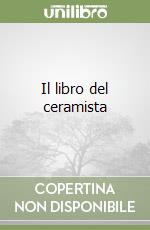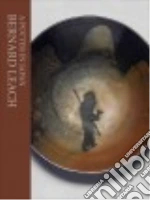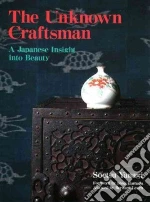 Libri di Bernard Leach su Unilibro.it
)
Libri di Bernard Leach su Unilibro.it
)
|
|
2016 |
 Title :
Il libro del ceramista
Title :
Il libro del ceramistaAuthor: Leach Bernard Publisher: Libreria Editrice Fiorentina € 24,00
|
|
|
1915 |
 Title :
A Potter in Japan
Title :
A Potter in JapanAuthor: Leach Bernard Publisher: Unicorn Pr Ltd It would be a challenge to find a potter in the world more widely known and respected than Bernard Howell Leach. Though considered the father of British studio pottery, he is as famous in Japan as he is in Europe and the United States?not only as an artist and craftsman, but also as a philosopher. Though born in Hong Kong, Leach spent his early life in Japan. He moved to England at the age of ten, and he attended art school in London, before returning to live in Japan from 1909 to 1920. During this crucial period of artistic discovery, Leach first established himself as a potter and a master of the raku style. He eventually moved back to England to hone his craft, before traveling throughout most of Europe and Asia. A Potter in Japan is a collection of memoirs and diary entries from the time he returned to Japan to teach and travel in the early 1950s. These accounts provide a unique opportunity to see the important Eastern influence on his craft and will appeal to lovers of ceramics and anyone with an interest in cultural interchange between East and West. € 31,20
|
 Title :
A Potter's Book
Title :
A Potter's BookAuthor: Leach Bernard Publisher: Unicorn Pr Ltd When potters throw clay onto a stone, they make a connection across centuries to ancient workshops. The techniques and traditions of these early craftsmen, especially those of China’s Sung dynasty, still inform many of the pottery practices in use today, thanks to the seminal work of Bernard Leach. Leach’s A Potter’s Book was among the first to collect ancient workshop traditions for modern use in studios, emphasizing functional work. It became an immediate hit among potters who embraced its ideal of unity, spontaneity, and simplicity of form. Leach, considered the father of British studio pottery, went on to establish of one of the most respected studios in the world with the ideas of A Potter’s Book at its foundation. With this classic book, potters can learn everything, from how to set up their workshop to how to adapt pigment and glaze recipes to how to design custom kilns. It spotlights four types of pottery: Japanese raku, English slipware, stoneware, and oriental porcelain. Thanks to Leach’s time in Japan and collaborations with master potter Shoji Hamada, it also serves as a fascinating look at the interplay between Eastern and Western art. € 29,90
|
|
1913 |
 Title :
The Unknown Craftsman
Title :
The Unknown CraftsmanAuthor: Yanagi Soetsu, Leach Bernard (ADP), Hamada Shoji (FRW) Publisher: Kodansha USA Inc craftsman working in a set tradition for a lifetime? What is the value of handwork? Why should even the roughly lacquered rice bowl of a Japanese farmer be thought beautiful? The late Soetsu Yanagi was the first to fully explore the traditional Japanese appreciation for 'objects born, not made.' Mr. Yanagi sees folk art as a manifestation of the essential world from which art, philosophy, and religion arise and in which the barriers between them disappear. The implications of the author's ideas are both far-reaching and practical. Soetsu Yanagi is often mentioned in books on Japanese art, but this is the first translation in any Western language of a selection of his major writings. The late Bernard Leach, renowned British potter and friend of Mr. Yanagi for fifty years, has clearly transmitted the insights of one of Japan's most important thinkers. The seventy-six plates illustrate objects that underscore the universality of his concepts. The author's profound view of the creative process and his plea for a new artistic freedom within tradition are especially timely now when the importance of craft and the handmade object is being rediscovered. € 31,20
|